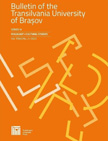The effect of intercultural communication in social media on figurative expressions usage
The effect of intercultural communication in social media on figurative expressions usage
Author(s): Demah Aamer AlqahtaniSubject(s): Language and Literature Studies, Theoretical Linguistics, Lexis, Methodology and research technology, Ethnic Minorities Studies, ICT Information and Communications Technologies
Published by: Editura Universitatii Transilvania din Brasov
Keywords: idioms; figurative meaning; literal meaning; borrowing; learning;
Summary/Abstract: Figurative expressions, such as idioms, are used orally and in writing in everyday language. An idiom is an expression used by itself or as a part of a sentence, and its meaning cannot be derived from the literal meaning of its constituents. Idioms can add an extra level of difficulty to the language learning process (either L1 or L2) because after understanding the literal meaning of each word, the learner has to make sense of the figurative meaning and how to use it correctly. From a pedagogical point of view, social media platforms appear to be influential with regard to learning literal and figurative meaning because they provide a context where this new language item is being used. This research investigates the role of social media platforms in figurative language learning. Different idioms are retrieved from social media platforms to show the effect of intercultural inclusion between speakers of different languages (English and Arabic). It is expected that watching a video containing figurative expressions or reading the comment section where an idiom is used can help the learners infer the meaning and know precisely how to use it and in what context. Moreover, new idioms are starting to be translated and borrowed to different languages due to L2 learners' exposure to this idiom in different contexts, which gives them an accurate depiction of it. The light is shed on the role of bilinguals and L2 learners who can work as an intercultural link between speakers of Arabic and English.
Journal: Bulletin of the Transilvania University of Braşov, Series IV: Philology & Cultural Studies
- Issue Year: 15/2022
- Issue No: 2
- Page Range: 47-58
- Page Count: 12
- Language: English

